The Owl In The Rafters – Shedding Some Light On Naoki Urasawa
Naoki Urasawa is a name that many of you may already know as one that has been gaining popularity in the American anime/manga scene over the past few years. His big international breakout title was Monster, the manga of which actually slipped under the radar into the US through Viz, in 2006, without causing much of a stir. The dubbed animation however made a big splash appearing on Syfy channel’s Monday evening block, appropriately enough in October of 2009.
The story of Monster, follows a young Japanese neurosurgeon, Dr. Kenzo Tenma, working in Düsseldorf, Germany in the years following the fall of the Berlin Wall in 1989. In the wake of the German Reunification, political remnants of the now defunct Federal Republic of Germany haunt Europe, and a political refugee and his wife are found dead, their adopted son rushed to Eisler Memorial Hospital with a bullet in his head, and the boy’s twin sister left paralyzed in shock. Faced with a conflict of moral and professional obligation, Kenzo chooses to sacrifice his professional career in order to save a boy’s life, but when doctors from Eisler Memorial Hospital begin dying from mysterious causes and the twin patients go missing, the good doctor is suspected of murder. In a bid to save his name, career, and innocent lives, Dr. Tenma suddenly finds his life turned upside down as he travels across Europe in search of the real murderer.
The 18 volume (162 chapter) long story make for a fantastic introduction to Urasawa’s style of story telling and art style. The 74 episode long animated television series however, I must confess, was in some ways unimpressive comparatively. Unlike many television adaptations, the anime actually manages to stick to the manga nearly word for word and shot for shot, which is actually fantastic for upholding the integrity of the plot and story. The one fault there being that the director does very little apart from piggy back on Urasawa’s sense of direction, and when animating certain moments, transitions and overall sense of motion can seem a bit off. My gripes with the art and animation are absolutely minimal however and in terms of production the original animated series is actually of perfectly reasonable quality. The bigger problem for me is the English dub. With the story’s enormous cast of characters, the dub features an all star cast, spotlighting Liam O’Brien, Richard Epcar, and Keith Silverstein in key roles, all of whom do a fantastic job. “Fantastic” he says… What was the problem then, you might ask? I am not a particular fan of the way most anime has been dubbed over the past few years, but this was a title that held the greatest potential for an English speaking cast to blow the original voice work out of the water, and yet despite having a cast of perfectly talented and capable actors, there was not a single effort made on part of directing to work so much as a single German, Czech, Japanese, Thai, French, or English accent into any of the respective roles. The whole thing takes place outside of Japan so a Japanese cast was out of place to begin with, but a cast of American English speakers is no less awkward or out of place. That small personal gripe aside however the anime is still well worth the watch.
Urasawa’s next biggest title would be 20th Century Boys, Urasawa’s award winning pseudo-autobiographical, sci-fi, thriller. While Monster may be Urasawa’s flagship title, 20th Century Boys could be argued as his true masterpiece. It saw American publication right along side Monster in ’06, and has also been adapted into a series of three live-action films, also released by Viz Media. While both titles share similar traits, the most defining feature to set 20th Century Boy apart is that it plays on a certain sense of nostalgia that draws you in on a much more personal level than Monster did: Monster kept you fascinated with the exotic and unknown aspects of the local history, and characters in Tenma’s journey, but 20th Century Boys makes every attempt to reach into its audience’s own familiar comfort zone in order to twist and pull at heart strings.
All adults were kids once, and all kids have to grow up at some point. As we get older, we like to think that we still remember our childhood, or in the very least all the important parts of it, but there are always things our childhood friends (and more often enemies) tend to remember as important that we end up forgetting, or that we remember differently. What would you do if one day your childhood came back to haunt you? If the games you played as a child became the skeleton for a madman’s murderous plot? And what if it became clear to you that the masked man behind the slaughter could only possibly be one of your childhood friends? This is exactly what happens in 20th Century Boys, when ’70s child, and former dead end rock guitarist, Kenji Endo, realizes that the imaginary evil organization he and his friends fought as kids, has become to basis for an influential and fast growing cult led by a man calling himself “Friend”. On the advent of the new millennium, Kenji and his childhood friends reunite in an attempt to stop the maniac, Friend, and save the world. But there are details that aren’t clear about the childhood the heroes shared together, and not everyone saw their group the same way. Thinking back on your own childhood, who can you remember spending time with? Were they really your friends? Who did you look up to the most? And is he/she still a friend now?
The most recent of Urasawa’s English translated releases through Viz Media, would be PLUTO, a fantastic original spin on the World’s Strongest Robot story arc of Osamu Tezuka’s world famous Tetsuwan Atom, better known in the US as Astro Boy. PLUTO tells a stunningly beautiful human drama wrapped in an ongoing murder mystery where the worlds’ greatest heroes, seven super robots constructed as war machines, fall prey to an unknown assailant. Of these seven super robots, German robot inspector, Gesicht is brought in with Europol to investigate the murders of both the mechanical war heroes and their creators. Urasawa’s writing makes use of the cold, logical, and almost naive nature of the robot characters to explore questions of life and death, and what it means to feel love, hate, and sadness. The story of course runs parallel with many of the original plot points of Tezuka’s original timeless classic, but doesn’t fail in the slightest to weave a brand new story out of the old mesh. While the lesser known of Urasawa’s three big titles, and also the shortest, running just 8 volumes and a total of 65 chapters, PLUTO never falls short in terms of quality. And for those whom it may concern, contrary to popular belief, PLUTO requires absolutely minimal knowledge of Tezuka’s Astro Boy from the reader to be enjoyed. It really does manage to make an almost unrecognizably fresh new story out of Tezuka’s classic.
All three of Urasawa’s major titles share his uniquely cinematic vision, as opposed to the exaggerated and stylized norm in mainstream anime today, and his sensational grasp on storytelling that draws from a wealth of both Japanese and European history, film, and literature. Aside from his storytelling and art style however, Urasawa has become particularly well known for his daring use of diverse and exotic location and period settings, built upon an absolutely uncanny knack for research when it comes to his reference material. His works have spanned a good portion of the Earth’s northern hemisphere, with temporal settings stretching as far back as the era B.C. But while these three may be his biggest claims to fame, Urasawa’s career began well before the publication of Monster in 1994, with a much more humbly written, but no less sensational serial title called, Yawara! The Fashionable Judo Girl, that ran in Shogakukan’s weekly Big Comic Spirits magazine from 1986 to 1992.
Yawara!, as its secondary title might suggest, was a sports manga with about as little in common with the murder mysteries and suspense thriller stylings of Urasawa’s later works as one can imagine. The story details the life of the titular main character, and her reluctant dive into the world of competitive judo. Yawara’s grandfather, a five-time national judo champion has trained the girl since birth to follow in his footsteps as an Olympic contender, but unfortunately for him, his plans backfire as Yawara wants nothing more than to live her life as a normal teenager. The plot follows what you would expect from a first time mangaka’s sports series, moving from one match to another segmented by training and details of the sport.
What sets the title apart, and not surprisingly what ties it to its successors, is Urasawa’s endearing character writing and flare for research and reference in setting: in the manga Yawara’s goal -or rather her grandfather’s goal- was for her to compete in the 1992 Olympics in Barcelona, which in real life actually was the first time that Women’s Judo was honored as a full Olympic competition in which medals were awarded. As a testament to the manga’s popularity, the real life Women’s Judo gold medalist, Tamura Ryoko became known by the nickname “Yawara-chan”.
Despite the manga’s immense popularity within Japan however, the 27 volume long series has yet to see publishing outside of Japan. To put its popularity in perspective for American fans: in 1989 it was adapted into an anime which ran on the same station as the now world famous Ranma1/2, and for the entirety of its broadcast Yawara! received higher ratings than Ranma. Despite this, the Yawara! Anime was released in North America by AnimEigo only recently, in 2006. It didn’t take long for Urasawa’s career to blossom from Yawara!’s stellar success, but despite the great national pride that shouldered Yawara!’s rise to fame, Urasawa’s next work would set the stage for the titles we’re seeing given the spotlight today by taking the hero out of the familiar setting of Japan. It was in 1988, in the middle of Yawara!’s stunning success, and still years before its end, that Urasawa began the seminal work upon which all his later popular titles would draw from, Master Keaton.
Unlike Yawara!, Master Keaton ventured far from Japan, starting in London and jumping around nearly all of Europe following the adventures of Oxford graduate, part-time college lecturer, aspiring archeologist, former British SAS sergeant, and most importantly insurance fraud investigator for the real world insurance market, the prestigious Loyds of London, Taichi Hiraga-Keaton. Be it on the job for Loyds, in pursuit of archeological finds, while visiting or bumping into old college friends, or quite often by complete coincidence, Keaton finds himself constantly in the midst of some mystery, scandal, or danger in which he must use his quick wits, academic anthropological know-how, and military background to get by.
Apart from promoting a truly admirable ethical model of the modest man of the world, it was with Keaton that Urasawa found his archetypal hero; the humble and displaced Japanese man making his way in the Western world. It was also with the adventures of Keaton that Urasawa’s own love of the world began to shine through with the incredible detail and history put into each of the stops on Keaton’s journey.
There is but one last title I feel I must touch on in this overview of Urasawa’s career—a piece of work virtually unknown outside of Japan—his most recent, and currently running project, Billy Bat. The unusual title, as you might already be skeptical of, is a play on Walt Disney’s Mickey Mouse; much in the same way Monster referenced Mary Shelly’s Frankenstein, while Billy Bat, himself is presented as a number of characters, the first of whom is a disturbingly seamless mix of American cartoon/comic icons, Dick Tracy, the Batman, and the aforementioned rubberhose rodent.
The story of Billy Bat begins in 1949, with a Japanese-American comic artist by the name of Kevin Yamagata. Drawing from all the sensational aspects of his hit title, Monster, Billy Bat begins as a fantastic period set piece and quickly explodes into a full blown historical-fiction thriller. From the very beginning, using McCarthy’s red scare as a springboard, the story launches itself head long into a fantastic seedy underworld mystery that gradually expands its shadowy reaches to touch upon everything from the American race riots, to the fall of the Iga ninjas and rise of the Tokugawa shogunate, to the crucifixion of Jesus. If you thought Monster was an unpredictable, mind-bending, whirlwind drama, then Billy Bat is sure to blow you out of the water and then some.
Given the almost shocking pace at which the story develops it is incredibly hard for me to say much more without ruining all of your fun. What I will say in criticism of Billy Bat is that because it develops at a fantastically quick pace it can very easily lose readers in a confused cloud of dust. That said, to really enjoy Billy Bat there is a certain level of faith that the reader is expected to put into Urasawa, that everything will make sense in the end. As it stands Billy Bat is not licensed by North American companies and is running in Kodansha’s Weekly Morning magazine, and as of July 27th Kodansha has published four volumes of Billy Bat.
I suppose a content warning would only be fair, if not overdue at this point, as Urasawa’s work all falls into the seinen (older men) demographic, and is thus mostly unsuitable for younger audiences. Use of drugs, alcohol, varying degrees of sexual themes, the presence of prostitutes, blood, death, murder, and violence against women, innocents, and children all work together to keep Urasawa’s work in a strictly R rated hemisphere (Save for Fashionable Judo Girl: Yawara! That one’s perfectly safe for everyone.). So, while taking heed of that last minute warning and minding where you stand on “age appropriate” content, I strongly recommend you look into one if not all of the titles mentioned here.
Questions? Comments? Concerns? Discussion? Meet me on the forums in the Features and Articles section!




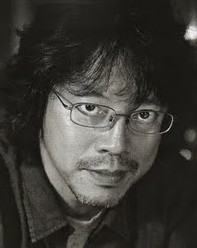
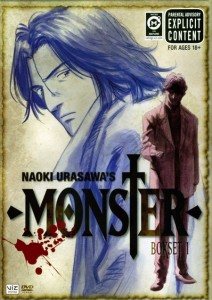
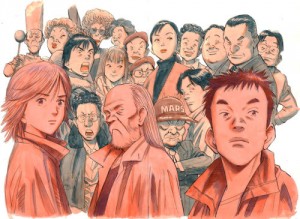
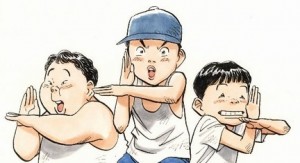
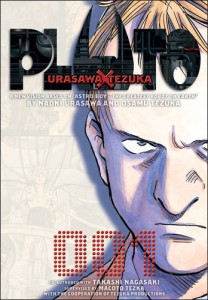
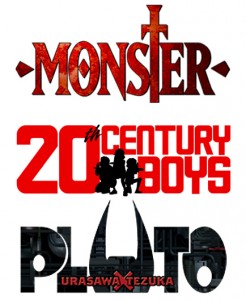
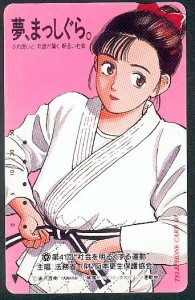
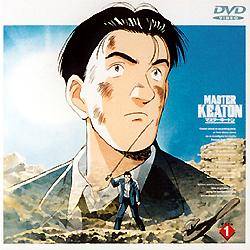
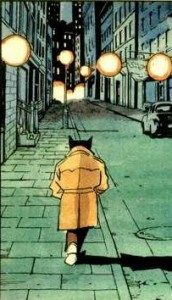

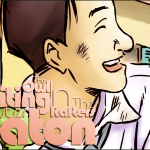
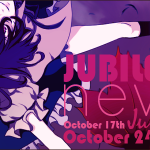
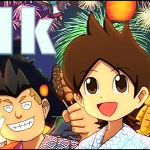



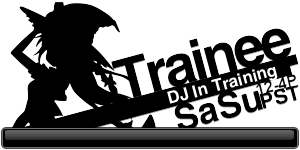






This guy is only one of my favorite mangaka’s ever!! ;__;
Mine too! He’s really something else. I do feel bad that by having to cram all these titles together I really didn’t manage to do any of them justice. He’s sadly a little known name in the US so far, but hopefully that’ll change.
Yeah I hope he gets more popular too, and trust me. You did good x]
Another great read ^^
[…] 91.8 The Fan » Blog Archive » The Owl In The Rafters – Shedding … […]
[…] a decent review on 91.8 The Fan of his works including “Yawara!” & “Billy Bat”, his first booming & […]
[…] personal work, but I’d mostly be repeating myself, so instead I’ll just direct you to my previous article, where you can go to read up more on the author. For now, I’d like to move us along to […]
[…] inside Tezuka Osamu’s world of Astro/Atom Boy): wikipedia, mangascans..and a decent review on 91.8 The Fan of his works including “Yawara!” & “Billy Bat”, his first booming & […]
[…] a decent review on 91.8 The Fan of his works including “Yawara!” & “Billy Bat”, his first booming & […]